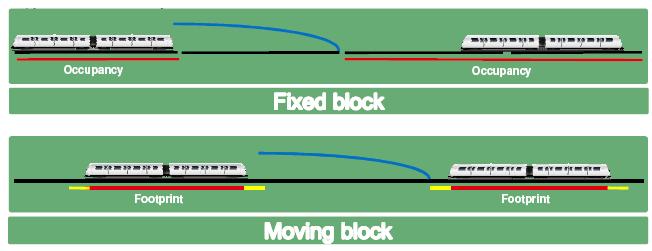mdrejhon
Senior Member
(moving order of posts...moving an older post to bottom to try to put things on topic.
Not a repost, this is a full move -- no post of any kind exists in its original location)
There are many variants and brands of CBTC.
Here's the Thales brand:
I would presume there is some kind of connection or hierarchy that will lead to the new GO operations centre at Oakville, probablay being optimized for the future CBTC era. How strongly or tenuously linked, or if it is where the CBTC central computer will be too, we do not know, but it likely would streamline operations to have some process where central can order other trains to do something based on info received from CBTC.
Little things like quicker more-complex games of musical chairs (track reassignments before too late, before passing the last switch) to prevent a bigger delay cascade, more seamlessly get around an unexpected event, or other mudane curveballs that unexpected train problems, emergencies, equipment or infra issues, etc.
Either dispatched manually based on CBTC data and other sources of info, or automatically by a central computer - either situation could occur for specific situations depending on how it is all set up.
I am assuming Metrolinx's 800 million dollar quote for GO-wide CBTC refers to the whole electrified network rather than just the EMU routes? It is a major undertaking. Just look at TTC and New York City Taking more than a decade to install CBTC, and only on one or two lines. CBTC construction is faster on the surface routes, but it is a major undertaking.
It is a megaproject unto itself, and a delay in rolling out a more complex CBTC plan defacto means a big delay in introducing a tight peak-period 4-or-5-minute GO RER headways and 1 train a minute leaving Union (49 trains per hour as documented).
Depending on the plan allowing for it, you could properly plan to stagger CBTC introduction and use it to add trains gradually. This might mean CBTC might continue to deploy well past 2025.
Not a repost, this is a full move -- no post of any kind exists in its original location)
There are many variants and brands of CBTC.
Here's the Thales brand:
I would presume there is some kind of connection or hierarchy that will lead to the new GO operations centre at Oakville, probablay being optimized for the future CBTC era. How strongly or tenuously linked, or if it is where the CBTC central computer will be too, we do not know, but it likely would streamline operations to have some process where central can order other trains to do something based on info received from CBTC.
Little things like quicker more-complex games of musical chairs (track reassignments before too late, before passing the last switch) to prevent a bigger delay cascade, more seamlessly get around an unexpected event, or other mudane curveballs that unexpected train problems, emergencies, equipment or infra issues, etc.
Either dispatched manually based on CBTC data and other sources of info, or automatically by a central computer - either situation could occur for specific situations depending on how it is all set up.
I am assuming Metrolinx's 800 million dollar quote for GO-wide CBTC refers to the whole electrified network rather than just the EMU routes? It is a major undertaking. Just look at TTC and New York City Taking more than a decade to install CBTC, and only on one or two lines. CBTC construction is faster on the surface routes, but it is a major undertaking.
It is a megaproject unto itself, and a delay in rolling out a more complex CBTC plan defacto means a big delay in introducing a tight peak-period 4-or-5-minute GO RER headways and 1 train a minute leaving Union (49 trains per hour as documented).
Depending on the plan allowing for it, you could properly plan to stagger CBTC introduction and use it to add trains gradually. This might mean CBTC might continue to deploy well past 2025.
Last edited:






